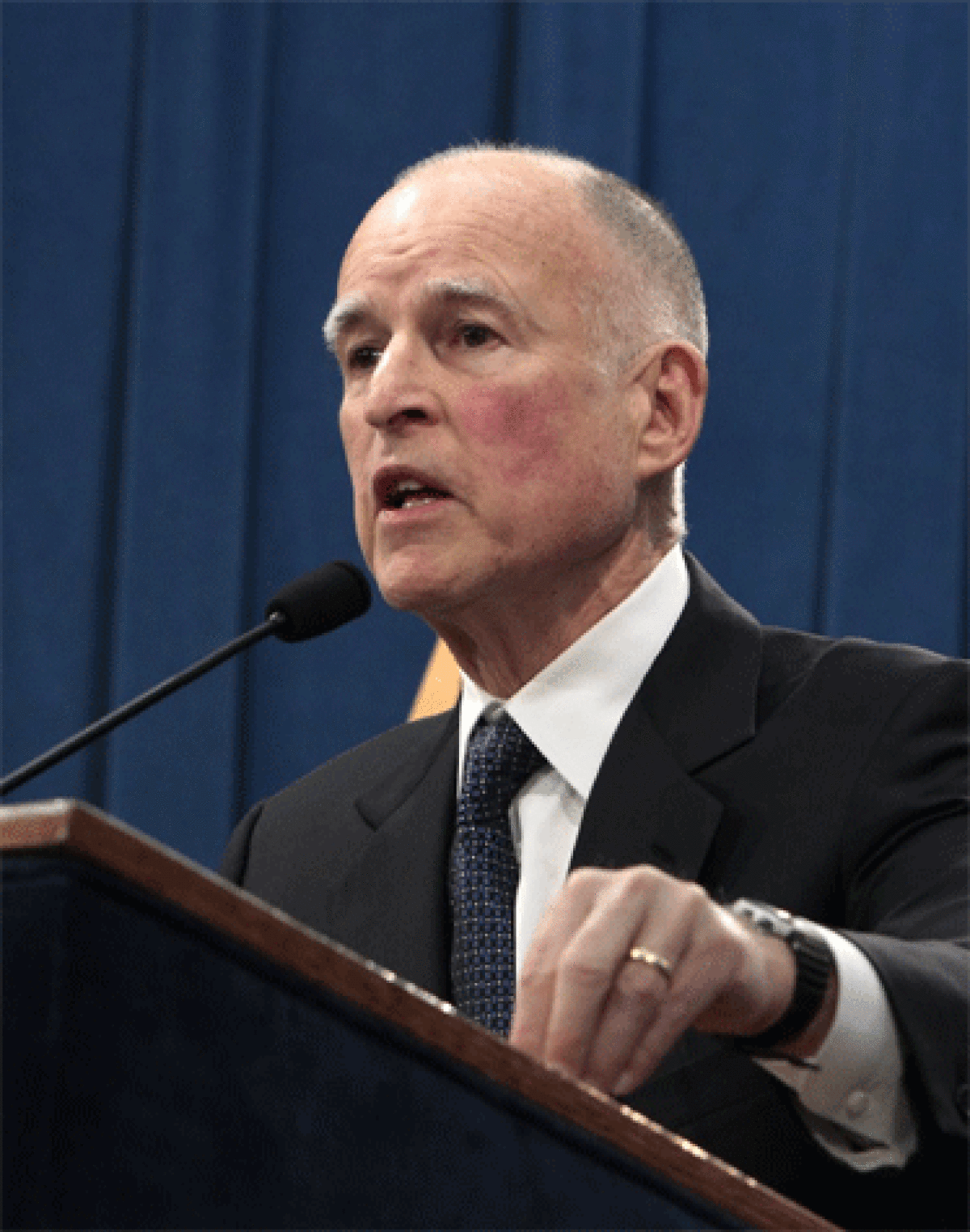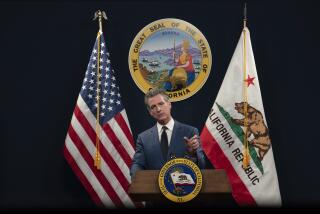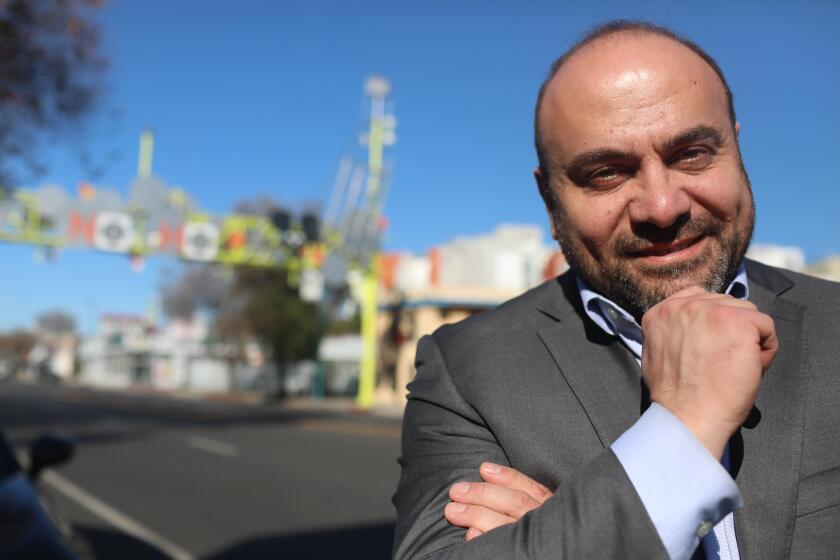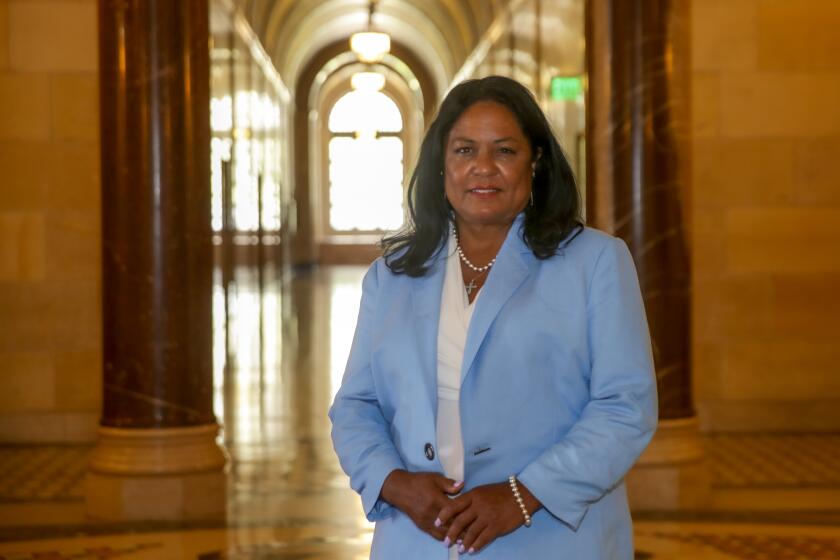State of the state

When a young Jerry Brown was elected governor of California nearly 40 years ago, he ushered in an era of both optimism and limits. His message to Californians was that they could have more, do more, be more — but only if they proceeded with wisdom and made smart choices.
It fell to Brown and his constituents to nurture and build upon the promised land that the postwar generation had built: unparalleled networks of roadways, water delivery, higher education, parklands; new opportunities for the previously marginalized and neglected. There was progress, but along the way Californians and their elected leaders — first Brown, then his successors, and always the Legislature — developed a quarrelsome relationship. Voters tired of Brown, who always seemed to be looking for greater things on some political mountaintop or other.
Meanwhile, voters imposed their own era of limits on government. In one initiative after another, they capped property taxes, limited legislative terms, restricted spending, rejected taxes. Lawmakers and governors complained that their power to craft responsible budgets and deliver expected services had all but disappeared. Voters complained that their friends and neighbors had sent only the crooked, the cowardly and the lazy to Sacramento.
California had tied itself in knots, and it seemed for a while that the only way to untie them was some kind of grand bargain. Voters might loosen term limits, but only in exchange for redistricting reform. They might agree to raise taxes, but only if government slashed expenses. But few bargains made it to the ballot, and of those that did, few were adopted. It seemed the only answer was to start over, perhaps with a constitutional convention to shape a compact for governance by and for a new generation.
Although no such convention was called, it turns out that California’s ballot initiative process makes the whole state one big, ongoing constitutional conversation in which voters are continually reconsidering how the state should be run. For years voters declined to make changes, rejecting one measure after another to transform the way legislative and congressional districts were shaped, and it seemed they would never change their minds — until they did, twice, in 2008 and 2010. They said “no” again and again to term-limits reform, until last year when the time and the reform both seemed right. They repeatedly scoffed at tax increases, and then, with an aging Brown back in the governor’s office, they finally said “OK.” There were no swaps of one reform for another. Voters instead said, at the ballot box, that they would trust a new districting process, but only if a citizens commission directed it. Term limits could be loosened and made more rational, but would be kept. Taxes could go up, but only temporarily.
As Brown gives his 11th State of the State address Thursday, he comes before a California that is somewhat more optimistic and, more to the point, at least a bit more functional than it has been for a while. There can be no doubt that the progress is due in large part to his leadership and in large part to voters, who responded to Brown’s entreaty (or, if you prefer, his ultimatum) for tax hikes.
Still, it will take some work and some time before Californians look around them and again see the promised land that their predecessors built.
The state faces enormous debt piled up over decades, stemming partly from poor decisions on state worker and retiree compensation, but partly as well from bad tax policy imposed both at the ballot box and in Sacramento. It has bled resources from education and has thus poorly prepared the next generation to pick up wherever its predecessors will leave it.
It has made Sacramento’s books balance not just by dipping a little deeper into the pockets of shoppers and income earners but by dipping a lot deeper into the pockets of local government. Cities once stimulated their local economies, improved their residents’ quality of life and created jobs through redevelopment agencies. Those agencies are gone, and Brown shows little sign of permitting their return or their replacement until he has squeezed from their surviving successor agencies every last dollar that he believes belongs to the state. Counties once had the ability to offload their convicted felons into state prisons and onto the state’s books, but no more. Taxpayers will continue to bear the costs, unless their local governments get significantly smarter about managing their resources and crafting their policies. Whether or not they do, the governor’s attitude appears to be that it’s not his problem. Voters will have to focus more on their local elected officials — as they once did, when Brown first came to office — if they are to solve those problems.
Brown and voters must also deal with the issue of crime and prisons. For years, voters backed the building — and filling — of prisons; as a result, today’s prisons are overcrowded despite federal court orders demanding that the population be reduced. The governor would like the courts to declare the crisis over and done with, but a court-appointed monitor recently refused.
Another long-standing issue that remains Brown’s problem, as it was some
30 years ago, is getting his creative but ornery constituents to agree on how to find, share and use their water. He must move the state toward a solution, finally, for the Sacramento-San Joaquin River Delta, for agriculture, for conservation, for reclamation, for sustainability. With the right plan, enough water can surely flow abundantly for all Californians. As with the budget, taxes and services, it will require wisdom — from Brown as well as voters — if California is to avoid another generation of wandering.
More to Read
A cure for the common opinion
Get thought-provoking perspectives with our weekly newsletter.
You may occasionally receive promotional content from the Los Angeles Times.










